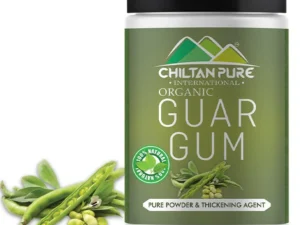Description
The Unsung Hero of Your Kitchen: A Deep Dive into Corn Starch
Corn starch. You probably have a box tucked away in your pantry, perhaps alongside the flour and baking powder. But have you ever stopped to consider the versatility and power of this humble ingredient? From thickening sauces to creating crispy textures, corn starch is a culinary workhorse deserving of a closer look.
What is Corn Starch, Anyway?
Derived entirely from the endosperm of the corn kernel, corn starch is a pure carbohydrate. The process involves extracting the starch, cleaning it, and then drying it into a fine, white powder. Unlike cornmeal or corn flour, which are made from the entire kernel, corn starch is solely focused on the starchy component, giving it its unique properties.
The Thickening Powerhouse:
Perhaps the most well-known application of corn starch is as a thickening agent. Add a slurry of corn starch and cold water to simmering soups, sauces, gravies, and stews, and watch as they transform from thin liquids into velvety smooth, well-bodied creations.
Why does it work? When heated, the starch granules in corn starch absorb water and swell, causing the liquid to thicken. This process, known as gelatinization, creates the desired viscosity in your culinary creations.
Tips for Thickening Success:
- Always mix with cold water first: Combining corn starch directly with hot liquid will cause it to clump. Create a slurry by whisking equal parts corn starch and cold water until smooth.
- Add to simmering, not boiling, liquids: Boiling can cause the corn starch to break down, resulting in a thinner sauce.
- Don’t overcook: Prolonged cooking after thickening can also lead to thinning. Aim for a gentle simmer and cook until the desired consistency is achieved.
Beyond Thickening: A Multitude of Uses:
While thickening is its claim to fame, corn starch boasts a surprising range of other applications:
- Crispy Coating Champion: Dusting proteins like chicken, tofu, or vegetables with corn starch before frying creates an incredibly crispy exterior. The starch absorbs moisture and promotes browning, resulting in a satisfying crunch.
- Tenderizing Meat: A marinade with a touch of corn starch can tenderize even tougher cuts of meat. The starch coating helps to lock in moisture during cooking, preventing dryness.
- Dusting Baking Pans: Use corn starch as a release agent when baking cakes or cookies. It’s particularly effective for delicate pastries that tend to stick.
- Homemade Playdough: A quick and easy playdough can be made with corn starch, water, and optional food coloring, providing hours of creative entertainment for kids.
- Relieving Skin Irritation: Corn starch can be used as a natural alternative to talcum powder for absorbing moisture and soothing mild skin irritations like diaper rash. Always consult with a doctor before using on sensitive skin.
Storing Corn Starch:
To ensure its longevity and effectiveness, store corn starch in an airtight container in a cool, dry place. Properly stored, it can last for years.
The Bottom Line:
From the everyday to the unexpected, corn starch is a versatile and reliable ingredient that deserves a prominent place in your kitchen. Its thickening power, crisping abilities, and surprising multi-faceted uses make it an indispensable tool for any home cook. So, next time you reach for that box in the pantry, remember the power and potential contained within those unassuming white granules. You might just be surprised by what you can create.












Reviews
There are no reviews yet.